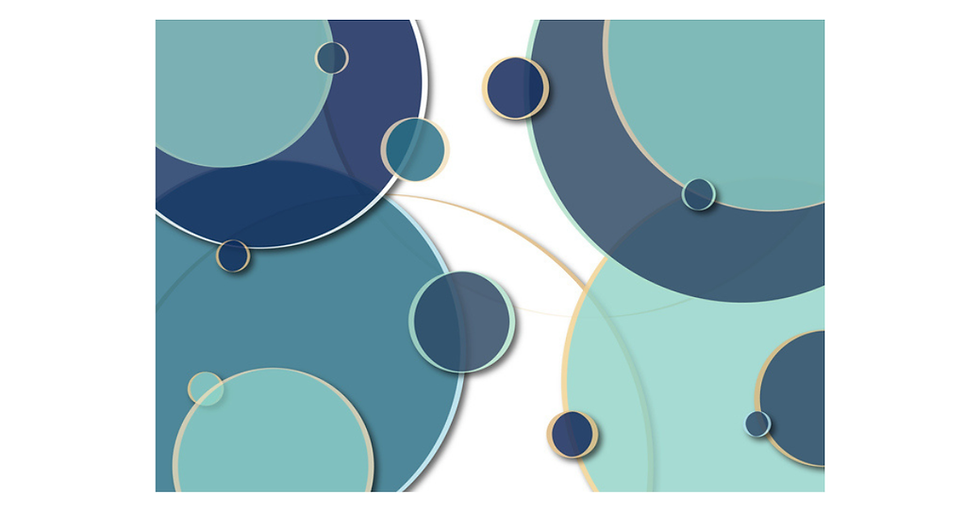Inside the Catalyst: How AI Speeds Up L&D and Human Potential
- Russell Fitzpatrick, PhD

- Nov 5
- 3 min read
Most organizations treat L&D like a content delivery problem. But the real challenge isn't what people learn - it's how quickly learning translates into performance. When business conditions shift by the quarter, traditional L&D takes too long.
Every organization runs on reactions where information becomes understanding, understanding becomes behavior, and behavior becomes performance. That chemistry of learning is what modern L&D strives to create by combining people, skills, knowledge, and culture into capability. It’s the company’s internal laboratory for innovation and growth.
But like a chemical reaction, the rate of transformation depends on the conditions inside the system. And in most organizations, those conditions haven’t kept pace with the speed of change.
AI changes that equation. It doesn’t replace the human element; it accelerates the reaction between learning and performance. AI becomes the catalyst in modern L&D.
How a Catalyst Works
In chemistry, a catalyst speeds up a reaction without being consumed by it. It lowers the activation energy, the effort required for two elements to connect and create something new. In the development of human potential, AI acts as that same catalyst. It lowers the cognitive and logistical energy required for learning to translate into performance.
Here’s what that looks like in practice:
Faster Connections. AI integrates data, context, and feedback in real time, helping people connect ideas that might otherwise take months to surface.
Reduced Friction. AI removes bureaucratic barriers, searching for content, aligning schedules, or analyzing results, so that energy goes into application, not process.
Increased Reaction Speed. By prompting new perspectives and patterns, AI accelerates how people make sense of complex problems and turn insight into action.
The outcome is a faster, stronger learning reaction, one that compounds across teams and functions.
From Content Delivery to Capability Acceleration
For decades, L&D measured success by programs delivered and hours completed. One of the most widely used ROI scales for L&D, focuses partially on parameters like that. But the true metric isn’t delivery volume, it’s reaction speed. How quickly does learning turn into changed behavior? How efficiently does new knowledge become business impact?
AI introduces immediacy into that equation. It enables learning to happen at the pace of work, not before it or after it.
The Neuroscience of Acceleration
Neuroscience explains why catalysts matter in the brain. The brain learns through a process called neuroplasticity, which strengthens connections between neurons through reflection, repetition and feedback.
Traditional learning relies on time and practice to create those pathways. AI multiplies the number of feedback loops available. Each interaction with your AI Second Brain becomes a micro-feedback moment that reinforces learning and rewires the brain faster. The catalyst increases the rate of change in the individual, and, over time, those faster reactions add up to a culture that learns and adapts at the speed of change.
The New Role of L&D
This shift gives Learning and Development a new mandate. The job is no longer to push information but to engineer the learning conditions that make growth reactions happen continuously. At haveLAB, we call this approach Human Potential Architecture.It’s the design of the human side of transformation, aligning technology, culture, and neuroplasticity so learning can happen continuously, not episodically.
AI is part of architecture, as the catalyst that keeps everything active. It ensures that every learning experience creates a measurable reaction that improves performance. When organizations introduce AI this way, three things happen quickly:
Learning accelerates. Knowledge moves through the system faster.
Capability compounds. Every new insight builds on the last.
Culture evolves. Curiosity and experimentation replace compliance and repetition.
The result is an enterprise that learns in real time.
For CEOs, CLOs, and HR leaders, the question becomes not about if we should use AI in L&D, but how to use it as a catalyst for growth. AI won’t automatically make organizations smarter.But when integrated intentionally into how people learn, decide, and collaborate, it accelerates everything those systems were built to do.
That’s the competitive advantage. Because the companies that master this won’t just have more knowledge, they’ll have faster reactions.
In business, as in chemistry, the real catalyst isn’t technology. It’s how you use it to accelerate human potential.
How is your organization thinking about AI's role in accelerating learning?




Comments